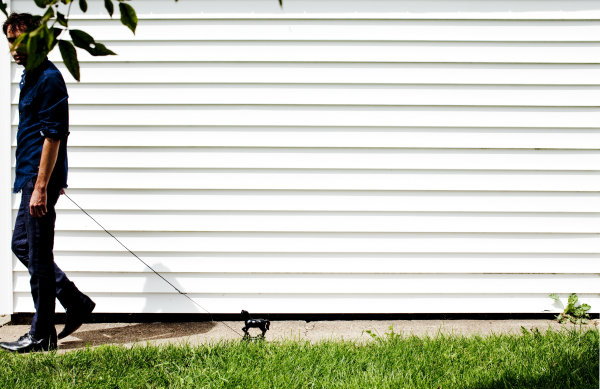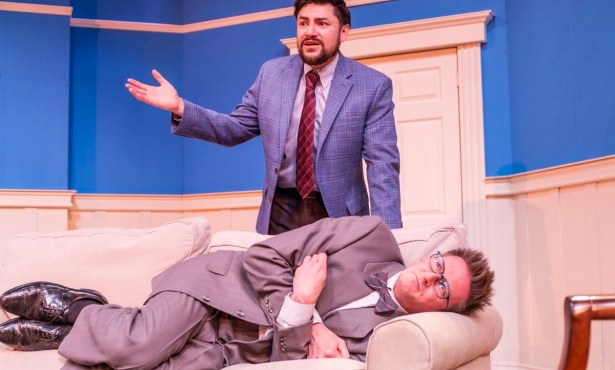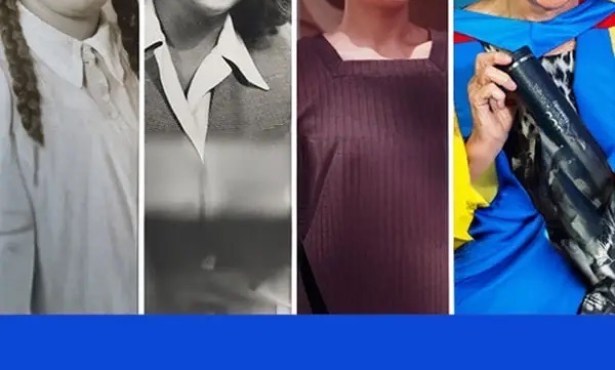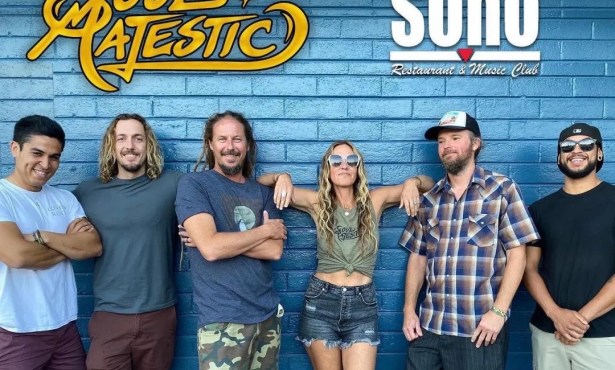Andrew Bird’s Hands of Glory
Pop Music’s Violin Maestro Goes Solo at UCSB

“I’m always into alternative ways of performing and places that aren’t on the rock ’n’ roll schedule,” says Andrew Bird. The acclaimed violinist is speaking specifically about a recent show near Joshua Tree, California. Dubbed “The Quietest Show On Earth,” the event paired Bird with singer/songwriter Tift Merritt, a camera crew, and 10 lucky contest winners for an intimate concert in celebration and support of America’s national parks.
“It entailed doing a three-mile hike through the desert with 10 strangers from all across the country,” recalls Bird. “I got to chat with all these folks, and then we finished the hike and played a show. It was really cool.”
Fans of Bird’s music will know that he is no stranger to the takeaway show format. In his 17-plus years of professional music making, the singer, songwriter, violinist, and avid whistler has played just about everywhere — from the roof of Queen Elizabeth Hall to the streets of London. On Thursday, November 21, Bird will land at UCSB’s Campbell Hall for an intimate solo performance with openers The Handsome Family. We recently caught up with Bird from his new home in Los Angeles to discuss nature, architecture, and his first West Coast Christmas.
The Joshua Tree show is just one of many performances you’ve done in nature. Do you feel like location informs your songwriting? Oh yeah, totally. It first hit me when I started writing songs when I was 18. My folks bought a farm in western Illinois when I was 12, and I started going out there and writing songs on the front porch of their farm. What was significant about it was, on that porch, you could see a weather system come into the valley. You could watch it approach you for 30 or 40 minutes and then rain on you and go on its way. It does something to your sense of time and space that calibrates your brain in a good way for music, I think. When you’re in an urban environment and always looking only two or three feet in front of you, you’re going to hear different kinds of music. That dawned on me a long time ago.
How does your barn studio space fit into that paradigm? Well, it’s a barn, so you’re committed to that kind of structure. The biggest thing in any space that I live or work in is the higher the ceilings, the more hope you have. And the better it sounds, I think. If you’ve ever seen those old soundstages from Columbia Records or Capitol Records, you never see the ceiling. I always think of that shot of Sinatra with the RCA microphone. There’s just something about vocals in a high-ceiling space. It makes you sing out; it makes you do that echolocation thing where you have to fill the room. I’ve also written music in little boxy apartments in Chicago and that tends to lead to a more intimate vocal. But I’m more a fan of pushing it out, of feeling the space.
I want to talk about the songwriting blog you wrote for the New York Times. Did you come to them with the idea, or did they approach you? They approached me about it. The editor there, Peter Catapano, had the idea of doing this Measure for Measure thing, and I guess I was on his list. I don’t write that much, and the writing I do goes into my songs, but when I’m asked to write, I actually enjoy it. I like having assignments.
After two decades of music making, it must be difficult to break down your process. It is, and you start to feel like you’re making it sound like a way more deliberate process than it really is because suddenly you’re working in the realm of journalism. That’s sometimes the disconnect with the discipline of journalism and the discipline of music; sometimes journalists assume that it’s as deliberate as what they’re doing. That’s where the most miscommunication happens. But then I started writing about it, and I’m like, ‘Oh, yeah. That’s what happens when you try to write about it.’ There are times where I asked myself, ‘Is this silly? Is this healthy? Am I demystifying all this stuff?’ But in the end, you have to work harder to really demystify it. And I was learning something from the whole process, so … That’s another thing that I use to gauge whatever I’m doing, whether it’s playing in the desert or whatever. If I’m learning from it, it’s worth doing.
You’re bringing your Gezelligheid show to the West Coast for the first time this year. Are you worried that 85-degree weather is going to wreck the vibe? Good question! That dawned on me after I booked it. The whole point [of those shows] was to combat the darkness and the cold of Chicago, and I never really expected it to go on the road. But I think we all need some communal warmth during the holidays. It’s a rough time of the year wherever you are, or it can be, so I’m counting on that.
Can you talk a bit about the show you’re bringing to Santa Barbara? It’s a little bit like the Gezelligheid shows. The church shows I’m doing in December are more about textures and ambiance and are more instrumental. This solo show is a little more about words and writing and songwriting; I engage the audience more verbally. Plus, it’s The Handsome Family opening up and they’re my songwriting heroes, so it’s more of an emphasis on that. But it’s going to have all the solo show bells and whistles — spinning horns and all that stuff.
Have you given any thought to the next record? Yes, but it will be a while. I’ve got some things that I still haven’t nailed on a record that I’d like to nail, mostly regarding vocals. It’s a good feeling that after 10 records, I still don’t feel like I’ve quite got it right.
4•1•1
UCSB Arts & Lectures presents Andrew Bird and The Handsome Family at Campbell Hall on Thursday, November 21, at 8 p.m. Call (805) 893-3535 or visit artsandlectures.sa.ucsb.edu for tickets and info.



